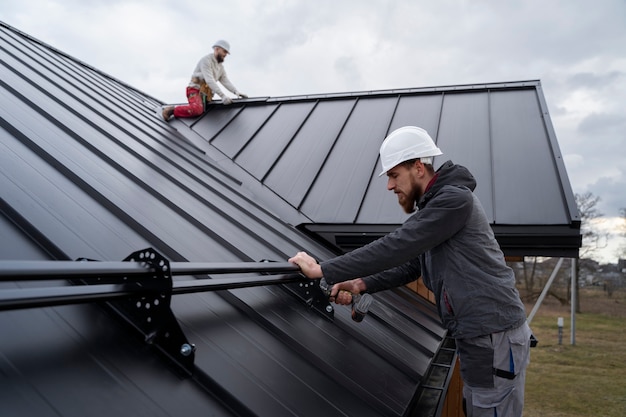
Your Guide to Commercial Roofing Maintenance and Replacement
Commercial roofing is a crucial aspect of any business infrastructure. It not only protects the building from environmental elements but also contributes significantly to energy efficiency and the overall aesthetic of the property. Regular maintenance and timely replacement of commercial roofs can prevent costly repairs and ensure the longevity of the building. This guide will provide insights into effective commercial roofing maintenance practices and considerations for roof replacement.
Understanding Commercial Roofing Types
Commercial roofing comes in various types, each with its unique properties and maintenance needs. Common types include:
- Metal Roofs: Known for durability and longevity, metal roofs require periodic inspections to check for rust and panel damages. Explore further insights here.
- Flat Roofs: These require more frequent maintenance due to water pooling issues. Regular checks for leaks and membrane integrity are essential.
- Asphalt Shingles: While more common in residential settings, some commercial properties also use them. They require inspections for cracked or missing shingles.
Importance of Regular Maintenance
Regular maintenance is key to extending the lifespan of any commercial roof. Effective maintenance includes:
- Routine Inspections: Conduct bi-annual inspections to identify potential problems early. This also helps in assessing the overall condition of the roof over time.
- Cleaning: Remove debris, leaves, and dirt from the roof surface and gutters to prevent water damage and other related issues.
- Repairs: Address minor issues like leaks, cracks, or missing parts promptly to avoid larger, more expensive problems down the line. Read more about this topic.
Signs Your Commercial Roof Needs Replacement
Knowing when to replace your commercial roof can save money and prevent business disruptions. Here are some signs to look for:
- Frequent Leaks: Persistent leaks indicate that the roofing material has reached the end of its lifespan or has been compromised.
- Visible Damage: Extensive damage such as large cracks, sagging areas, or missing parts suggests the need for a replacement.
- Age of the Roof: Most commercial roofs have a lifespan of 20-30 years. If your roof is nearing this age, it may be time to consider a replacement.
Learn more in this detailed guide.
Choosing the Right Replacement Option
When replacement becomes necessary, selecting the right roofing material is crucial. Factors to consider include:
- Building Structure: Ensure the new roof material is compatible with the structure of the building and can withstand local weather conditions.
- Energy Efficiency: Opt for materials that offer better insulation and can help reduce energy costs.
- Cost and Budget: Balance between the initial installation costs and the long-term benefits and maintenance costs.
Find additional information here.
Conclusion
Commercial roofing maintenance and replacement are integral to safeguarding the infrastructure of any business. Regular inspections, timely repairs, and informed decisions about replacements can significantly impact the longevity and efficiency of a roof. By understanding the types of commercial roofs, recognizing when a replacement is necessary, and choosing the right materials, businesses can ensure that their properties remain protected and efficient. For more detailed information on metal roofing options and maintenance, explore further insights here.